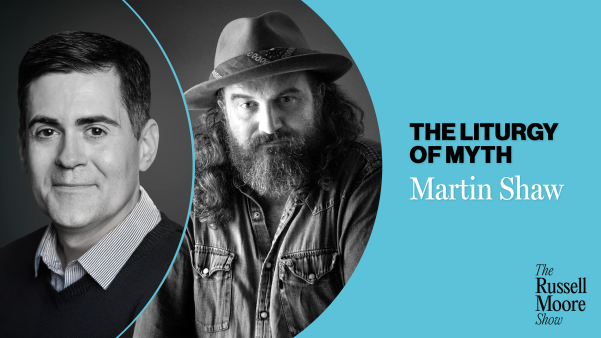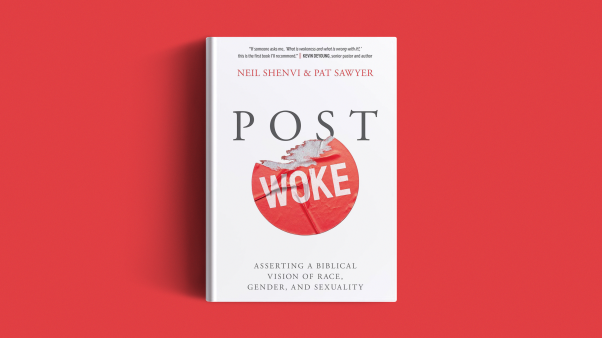When I was six, I started praying in earnest for a snowspeeder. Every night after my parents said goodnight, I knelt beside the bed and prayed. A snowspeeder is a vehicle from the Star Wars movies, specifically The Empire Strikes Back. Imagine a sort of wingless jet with two laser cannons on the front and another on the back. Each night I explained in great detail why I wanted this machine and asked God to provide it. In the mornings I leapt out of bed and raced to my bedroom window, expecting to see a spaceship on the lawn.
Christmas morning I awoke to find a toy version of a snowspeeder under the tree, and I remember thinking either I had not been sufficiently clear with the Lord or that he was playing a genie trick on me because I hadn’t been specific enough. I wasn’t doing it right. Prayer worked, sort of, but it didn’t get me what I wanted. Not really.
I’ve been a minister for 20 years now, and I still find myself with some childlike apprehension about prayer. God has spoken to me often in prayer, has provided for my family, has done amazing, unexpected things that were more than I hoped for or imagined. But there were also times when I prayed and nothing came from it. Or I went to a corporate prayer time and experienced only immense boredom. Or I offered up deep, important prayers, especially prayers for the healing of loved ones, which were met with silence. And sometimes, like it or not, the thought of prayer fills me only with feelings of obligation and guilt.
So it was with some trepidation that I picked up Pete Greig’s How to Pray: A Simple Guide for Normal People. I’ve read a lot of books on prayer. Some are deep and insightful and require a great deal of work to fully understand, and others are so simple that it feels like a waste of time to flip through them. There are always a few that help grow a heart for prayer in my own life, and those are the ones I like best.
Something to Connect with
Pete Greig is the founder of 24-7 Prayer, which is, according to the organization’s website, “an international, interdenominational movement of prayer, mission and justice.” It’s a “non-stop prayer meeting that has continued for every minute of this century so far, in over half the countries on earth.” Learning this did not make me feel better about the book. I suspected I was about to read something by someone at least 97 percent on the way to sainthood, and that the book might very well be a series of chapters telling me I should be more committed to prayer.
I am glad to say that I was wrong. In fact, this is the best, most astonishing, most powerful, most effective and beautiful book on prayer I have ever read. What’s more, I found myself praying as I read each chapter of the book, and my desire to pray grew stronger with each turn of the page.
I was caught completely off guard when Greig opened by summarizing the entire book in two and a half pages. In those couple pages he tells us that this book will be a detailed exploration of the Lord’s Prayer, and that it will teach us “How to P.R.A.Y.” (Pause, Rejoice, Ask, Yield).
Now if that sounds contrived or overly systematic for you, fear not. Many chapters have structured points like these to help you pray, but there are also a great many stories, poetic reflections, quotes, explanations of Scripture, and personal anecdotes. Each chapter is written in such a way that whatever your preferred learning style, there’s something to connect with. Each chapter also ends with a selection of tools to help you learn more about prayer: an online course called the Prayer Course, a reminder of concrete prayer practices that have been covered in the chapter, and suggestions of books you can read to learn more about the aspects of prayer covered in that chapter.
Here’s an example of what this looks like.
A friend of mine passed away the night before I read chapter 7. She had passed after an unexpected medical issue. She had lingered for several days as the doctors did surgeries to no avail. She was well loved by her family, her church, and her many friends, and we were all praying desperately for her recovery. But God did not answer those prayers in the way we desired.
As Greig started his chapter covering the phrase “your will be done” from the Lord’s Prayer, I didn’t expect it to cut its way through my grief and into my life. Greig uses “your will be done” as a springboard to discuss unanswered prayer. How do we deal with the disappointment when God doesn’t answer prayer in the way we desire, even when we’re praying for good things?
One thing I appreciate about this book is Grieg’s easy, approachable style. After the loss of my friend I didn’t need a dry theologian’s perspective on loss and grieving and the absence of God in hard times. I needed what Grieg supplied: a friend who has been through disappointment and grief himself, a fellow traveler on the journey toward Christ.
Greig starts by sharing multiple stories of loss in his own life. He is honest about his own experience of those things. He says things like, “The Bible is more honest about unanswered prayer than the church.” Then he shows us through the stories of Scripture that this is true. I appreciated that he never made it look like he was some super Christian, but instead just an ordinary person following Christ. In fact, he shares the painful story that months after starting the 24-7 Prayer movement, his wife was diagnosed with a brain tumor. “In a matter of days,” he writes, “I went from believing that my prayers could save the entire planet to doubting that they could save my wife.” This level of honesty put me at ease—here was someone who had experienced loss and grief like my own.
Greig spends much of the chapter talking about the ways Jesus dealt with disappointment and grief in prayer, as well as the reasons God may choose not to answer our prayers in the ways we think he should. He uses Scripture to point out Jesus’ vulnerability, how he pushed deeper into prayer when in anguish, and that he held onto God’s love, held out for his power, and yet was honest with God in the midst of his troubles. Toward the end of the chapter he gives us a specific practice: the prayer of relinquishment, in which we ask for God’s will alone to prevail. He explains how a prayer of relinquishment works and how to pray that way, before giving us the practical tools of the online video and a couple book recommendations.
A Book for Anyone
At the end of the chapter I felt a profound sense of my connectedness to Christ as well as to Greig and all those who have experienced suffering and loss despite our prayers to be spared. Between each chapter he has a short two-page story about a hero of prayer—in this instance Joni Eareckson Tada. And there was an example of a prayer of relinquishment, this one from the 18th-century French archbishop François Fénelon, and I found myself praying along while reading: Lord, I do not know what I should be asking of you. You are the only One who knows what I need… All I can do is present myself to you.
Which, more than anything, sums up my experience of this book. I found myself praying along while reading. I have a short list of books I love about prayer. How to Pray is an instant spiritual classic. Accessible for someone new to spiritual things, but deep enough for someone who has been following Jesus for decades, this is truly a book for anyone.
How to Pray is a book with heart, deep wisdom, generosity for where you are on the journey, practical tools and tips, and a gentle way of increasing the reader’s passion for prayer. Highly, highly recommended.
Matt Mikalatos is the author of several books, including, most recently, Good News for a Change: How to Talk to Anyone about Jesus (NavPress).










